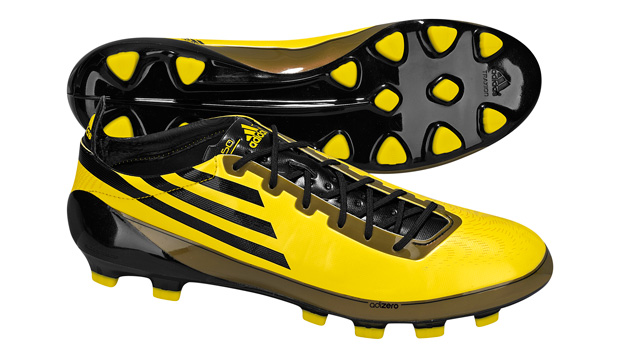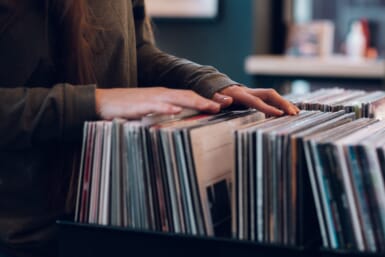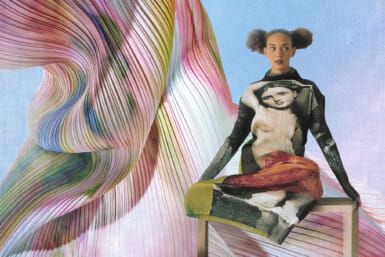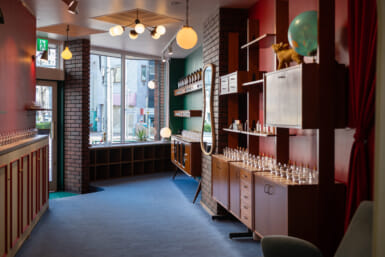one: Legendary Liverpool FC manager Bill Shankly once said, “Some people think football is a matter of life and death. I assure you, it’s much more serious than that.” Adidas has taken scientific research deadly seriously this year and pulled out all the stops for the 2010 tournament. To kick the world’s most high-tech ball comes the most high-tech boot. Unveiled just a couple of weeks ago, the F50 Adizero is the lightest boot in human history and will be worn by the likes of Messi, David Villa, and top Japanese player Shunsuke Nakamura.
Adidas stores (www.adidas.com/jp), from ¥17,325.
two: The official Japan uniform is packed with more technology than an Akihabara showroom. Two types of shirts have been engineered for the players. TechFit is a type of tight fitting, criss-cross elastic strap that according to Adidas can increase a players’ vertical speed, leap and endurance. Of course not all players will like the snug fitting shirts, so an equally advanced kit using Formotion technology has also been designed. Japan, South Africa and ten other nations will wear these shirts during matches this year.
Adidas stores (www.adidas.com/jp), from ¥10,395.
three: This year’s World Cup tournament sees the introduction of some of the most advanced sports equipment ever. The new Jabulani official match ball was made in association with Loughborough University, one of England’s top sport colleges. The unusual name means ‘celebrate’ in Zulu, and the ball is made from only eight surface textured panels, down from 14 in the last Cup. This means a rounder, faster, more accurate ball. The 11 colors used represent not only the 11 players in a team, but also the number of languages spoken in South Africa. The final on July 11, 2010 will feature a gold ball called Jo’bulani after the nickname for Johannesburg, the golden city.
Adidas stores (www.adidas.com/jp), from ¥3,360 to ¥21,000.
four: South African street artist Kronk is a Capetown native, and his designs are a colorful and whimsical collision of rock poster rebelliousness and wry pop culture references. His contributions to the Nike True Colors collection are the most intricate of any country, with an insanely detailed crest embroidery, a bubble lettered font, and kaleidoscopic illustrated patterns. Celebrating your home team or wearing the color of your favorite player has never been so cool.
Nike stores (www.nike.com), ¥6,090–¥11,550.
five: Brazil is the world’s most successful soccer playing nation, with a total of five World Cup wins, including the 2002 final at Yokohama’s Nissan Stadium. The Nike True Colors Brazil line draws from street artist Nunca’s cultural
background. Focusing on graffiti based designs, the print is a direct reflection of the Pixacao tagging style found on the walls of Sao Paulo. The collection features sneakers, shirts and jackets utilizing the Brazilian flag, five symbolic stars, angular handwriting and a mascot that seems to come from another time.
Nike stores (www.nike.com), ¥11,550.
six: Nike’s commemorative True Colors collaboration series combines the national colors and native talents of global artists (see the South Africa and Brazil contributions above). From England, graphic designer and illustrator James Jarvis has re-imagined the English heraldic lion as a googly-eyed mascot. The typeface takes inspiration from woodblock prints and the number ten was selected because it is traditionally preserved for the most beautiful players of the game.
Nike stores (www.nike.com), ¥6,090–¥8,190.
For more Products click here.














